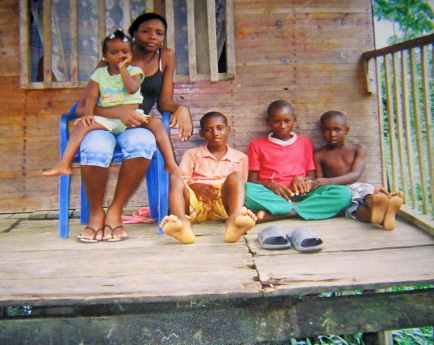

Youth take aim at poverty in Colombia

What are the biggest challenges facing your community? What are some ways to move out of poverty? How do you see the region of Chocó in 2015? Armed with these questions and a portable camera, more than one hundred indigenous Colombian youth recently participated in a photography contest that challenged them to imagine a better future for this impoverished region of western Colombia.
"We’re trying to make sure that we don’t get swallowed up by poverty; that we share knowledge so that we don’t have to rely on others. I see a Chocó in 2015 that is a better place, with everyone united,” answered Jarrizón Tafur Lana, a participant from the National University of Colombia.
The contest was sponsored by a joint UN programme financed by the MDG-Fund to tackle malnutrition and food insecurity in Afro-Colombia and indigenous communities in Chocó, which has been heavily affected by armed conflict. The idea was to focus young people’s eyes on the richness and diversity around them and involve them in finding ways out of the cycles of poverty that afflict their communities.
One young photographer shot the owner of a sugar-cane stand, sitting in front of his wares. Another captured four young boys rolling bicycle tires down a lane. A boys’ soccer team holds hands in a ring on a muddy playing field in a third image. A family washes their clothing in the river. A woman sits on the porch of her home with her four children. A crowd of children dances exuberantly in front of the camera.
"The kids are very excited and committed to this activity. It's a good idea to make them think about their region and provide input on the progress of Chocoanos," said Freddy Pino, dean of arts at Santo Domingo Savio, one of the schools that participated in the contest.
“I like to teach others about our ancestral lands and about our beliefs and traditions,” says participant Jarrizón Tafur, a volunteer with the Orewa Association, which represents indigenous local councils and works to preserve the environment and the rights and customs of native peoples. "We do workshops to talk about our culture, because we do not want to be forgotten and we want young people to remember the ancient ways."
Jarrizón produces radio spots to promote food security among community members. "My message to young people is that we have to unite, that we can’t get left behind, that by working together we can accomplish anything – we can study and learn every day and move ahead just like our ancestors did.”
Twenty-two of the photographs submitted to the contest were chosen to be part of a travelling exhibition that will tour the country to show the reality of life in Chocó to other Colombians.
The joint programme – a collaboration between five UN agencies -- is also helping to improve nutrition among pregnant women, nursing mothers and children under five in indigenous and Afro-Colombian communities in nine municipalities of Chocó. It is also working to strengthen inter-ethnic relations, contribute to gender equity and stop the perpetuation of malnutrition and poverty across generations.
"Indigenous and Afro-Colombian Communities in the Chocó Department promote their Food Security and Nutrition" is part of the MDG-F’s efforts to fight poverty around the world and to support governments in trying to reach the Millennium Development Goals by 2015, focusing particularly on empowering the most disadvantaged and impoverished communities.
Click here to read more success stories from the MDG-F's work to fight poverty and improve livelihoods around the world.